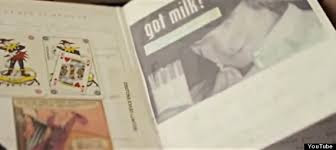Over a decade after it first appeared on the big screen, Heath Ledger's rendition of the Joker in 2008's The Dark Knight stands above all other supervillain portrayals. He came across as cold, thoughtful, and scarily real, bringing the Clown Prince of Crime to life in a new and impactful way. Pulling off such a chilling performance didn't come easy, and was the result of impressive dedication on the part of the man behind the makeup.
Heath Ledger took his acting work incredibly seriously and didn't shy away from an opportunity to push himself as an artist. He'd envelop himself in his characters to ensure he got every mannerism, line, and facial expression just right, no matter the nature of the project. Christopher Nolan's vision of Joker was no exception, and as it turns out, Ledger took his methodology to the next level for the part with a disturbing diary. While much of the diary's content – playing cards, comic panels, and various quotes from The Dark Knight – centers on the Joker, it also contains many extra images and writings that give fans a glimpse into Ledger's mind as he delved deeper down the rabbit hole. The small book has become almost as legendary as the character itself, leading fans and critics to praise Ledger for his unsettling commitment to his craft. Because of the foreboding nature of its content, however, it comes with its fair share of urban legends.
To truly become the Joker, Heath Ledger chose to isolate himself from the rest of the world for months at a time, locking himself in his apartment or hotel room to iron out the finer details of the character. During his exile, he'd work on his diary free of distraction, documenting his thought process, important quirks to the character, and other notes that describe how he came up with so many now-iconic parts of the Joker's characterization.
In a German documentary about the late actor, titled Too Young to Die: Heath Ledger, his father, Kim Ledger, was interviewed on the unorthodox nature of his son's preparation. While the elder Ledger admitted that the isolation and prolonged study was nothing new for his son, he described the Joker journal as being on "a whole new level." Even as bizarre as its content seemed on its own, the two strategies Ledger utilized in tandem with were undeniably crucial to perfecting his performance. The diary is full of clippings from comic books, which Ledger read in isolation. Pages of the diary are filled up with handwritten copies of the Joker's dialogue from his scenes, including the infamous moment when the Joker detonates a bomb in a Gotham City hospital. In the documentary, Kim mentions that when they were kids, Ledger's older sister Kate would dress him in a nurse's uniform, like he wears in the movie.
When Ledger described his version of the character to Empire in 2007, he said "I ended up landing more in the realm of a psychopath. Someone with very little to no conscience towards his acts. He's just an absolute sociopath, a cold-blooded, mass-murdering clown.
Heath also told Empire about Christopher Nolan's input on the character. "Chris has given me free rein," Ledger said. "Which is fun, because there are no real boundaries to what The Joker would say or do. Nothing intimidates him, and everything is a big joke." Ledger channeled this freedom while writing his diary, which is filled with words and phrases like "chaos" and "kill the Batman." On set, Ledger often improvised moments during scenes, and Ledger rarely told Christopher Nolan exactly what he was planning to do — and the unpredictability made directing his scenes much more intense than usual. One of the most memorable moments in the film that Ledger improvised takes place during the scene when Jim Gordon (Gary Oldman) gets promoted to police commissioner shortly after capturing the Joker. The Joker, in a nearby prison cell, sarcastically claps along with everyone else (via CheatSheet).
Among the many seemingly random images and frantic scribblings inside Ledger's diary were a handful of references to Stanley Kubrick's 1971 classic A Clockwork Orange — more specifically, a few images of fictional psychopath Alex DeLarge. The main character of the piece, he's best described as a sadistic teenager who commits heinous crimes and terrorizes anyone and everyone he encounters simply for the fun of it. Is that description ringing any bells?






